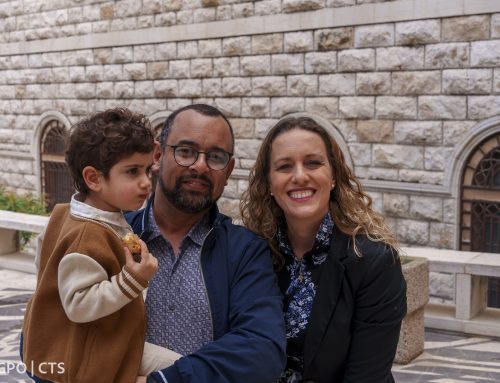 JERUSALEM – Praise the Lord! Rainfall was recorded during the night of the December 4/5 over Jerusalem. In the forthcoming weeks, further rainfall is expected from the South of Jerusalem up to Tiberias, passing through Haifa and Ramallah. Rainfall is rare, but when it pours, it overflows.
JERUSALEM – Praise the Lord! Rainfall was recorded during the night of the December 4/5 over Jerusalem. In the forthcoming weeks, further rainfall is expected from the South of Jerusalem up to Tiberias, passing through Haifa and Ramallah. Rainfall is rare, but when it pours, it overflows.
This year, the wintry climate came late in the Holy Land. The weather over the last weeks was more summer-like. Along with the dry weather, warm temperatures were recorded. Most November days recorded higher than average temperatures, the coastal plain more particularly having experienced the hottest month of November in 60 years.
It is to be remembered that the Latin Patriarch of Jerusalem talked last week about “the threat of drought hitting the diocese”. According to the Water Information Center: Israel, Palestine, Jordan and even Cyprus are countries with extremely limited water resources. Desert weather makes water a most essential resource. Last Thursday – day by day – Patriarch Fouad Twal called on the faithful of the Holy Land to “pray for God’s blessing, that He has mercy on us, that He takes care of our needs – more particularly water – and that He rids our land of the evil of dryness.” The first Sunday of Advent, December 1, was in fact dedicated to prayer and fasting to invoke rain’s blessing. Already back in Advent 2010, the Patriarch had asked the faithful to pray for the blessing of rain, at a time when the area suffered from a very dry season. The two Chief Rabbis Yitzhak Yosef and David Lau have also called for mass prayers at the Kotel (Western Wall), considering that the season is unusually dry in Israel when normally, at this time of the year, rainfall would cover the entire country.
The driest winter in half a century
According to figures released on Sunday, December 1, by Israel Meteorological Service, the current season is the driest in 55 to 70 years. Most of the measuring stations across the country have recorded less than 10 mms of rainfall for the month of November, compared to averages of 80 to 110 mms in the Northern hills, 70 to 85 mms along the coast and between 50 to 60 mms in the hilly central region and Northern valleys. Lack of rainfall is more pronounced in the North, where levels are the same as in the years 1946, 1962 and 2010. However, despite the lack of rain, as of December 1, the water level in the Sea of Galilee is one meter higher compared to the same period last year. This is attributed to abundant rainfall during last winter.
It also rained in Amman today, but the coming days will have scanty rainfall. Jordan however is in dire need. The desert covers 92% of the Kingdom and continues to spread. This country is one of the driest in the world. Renewable water sources are used at a rate of 120%, involving the risk of drying up in the short term.
By: Christophe Lafontaine





